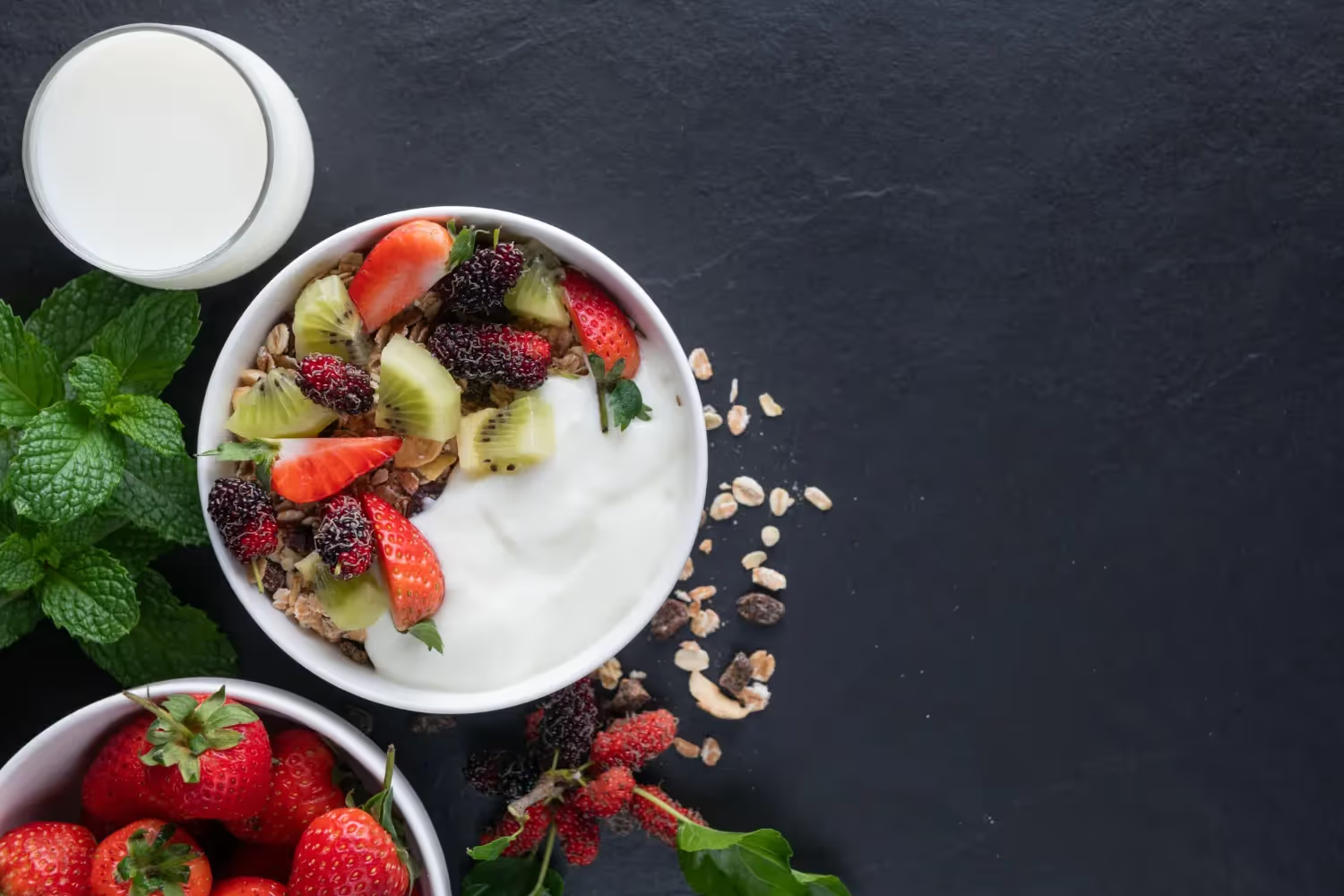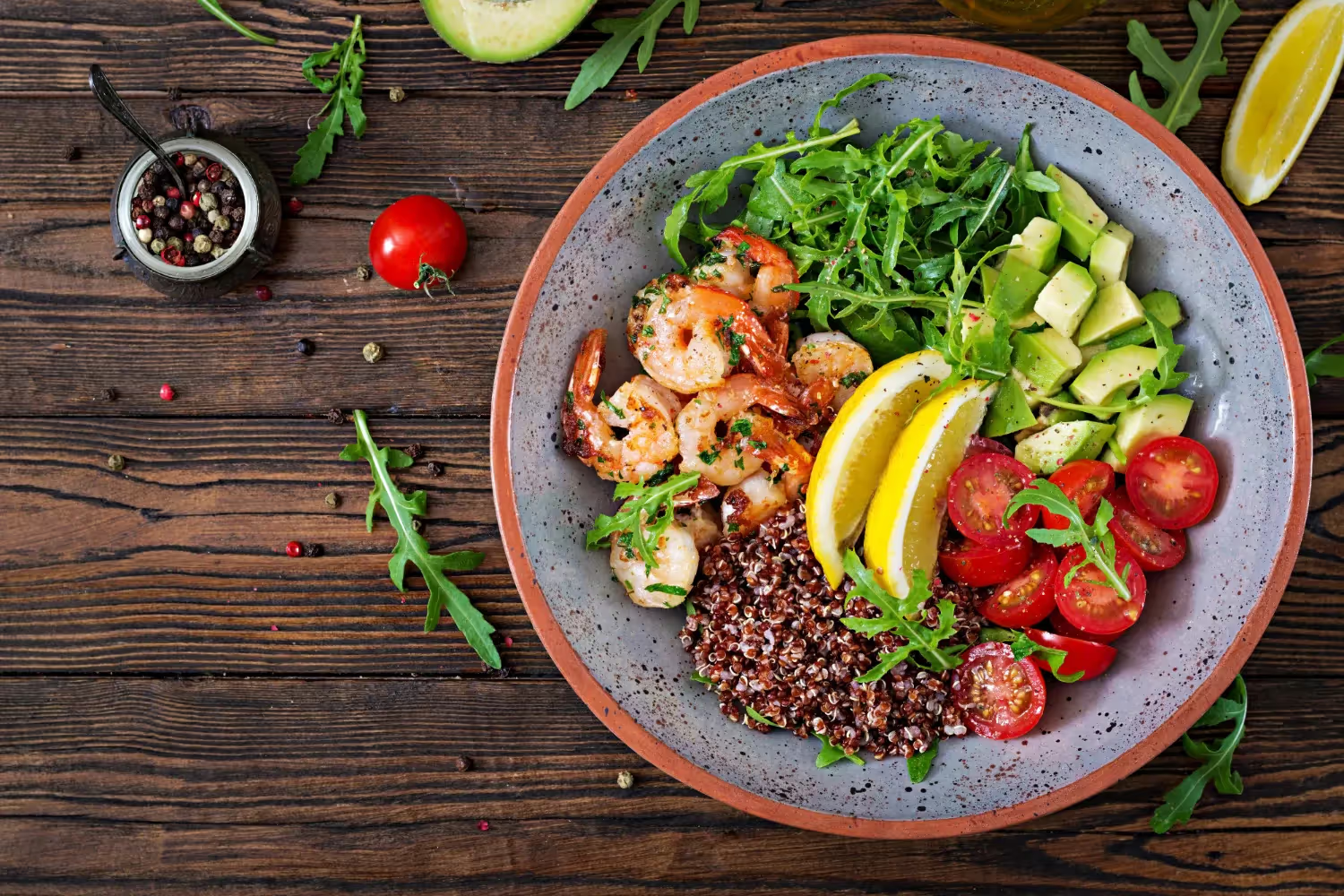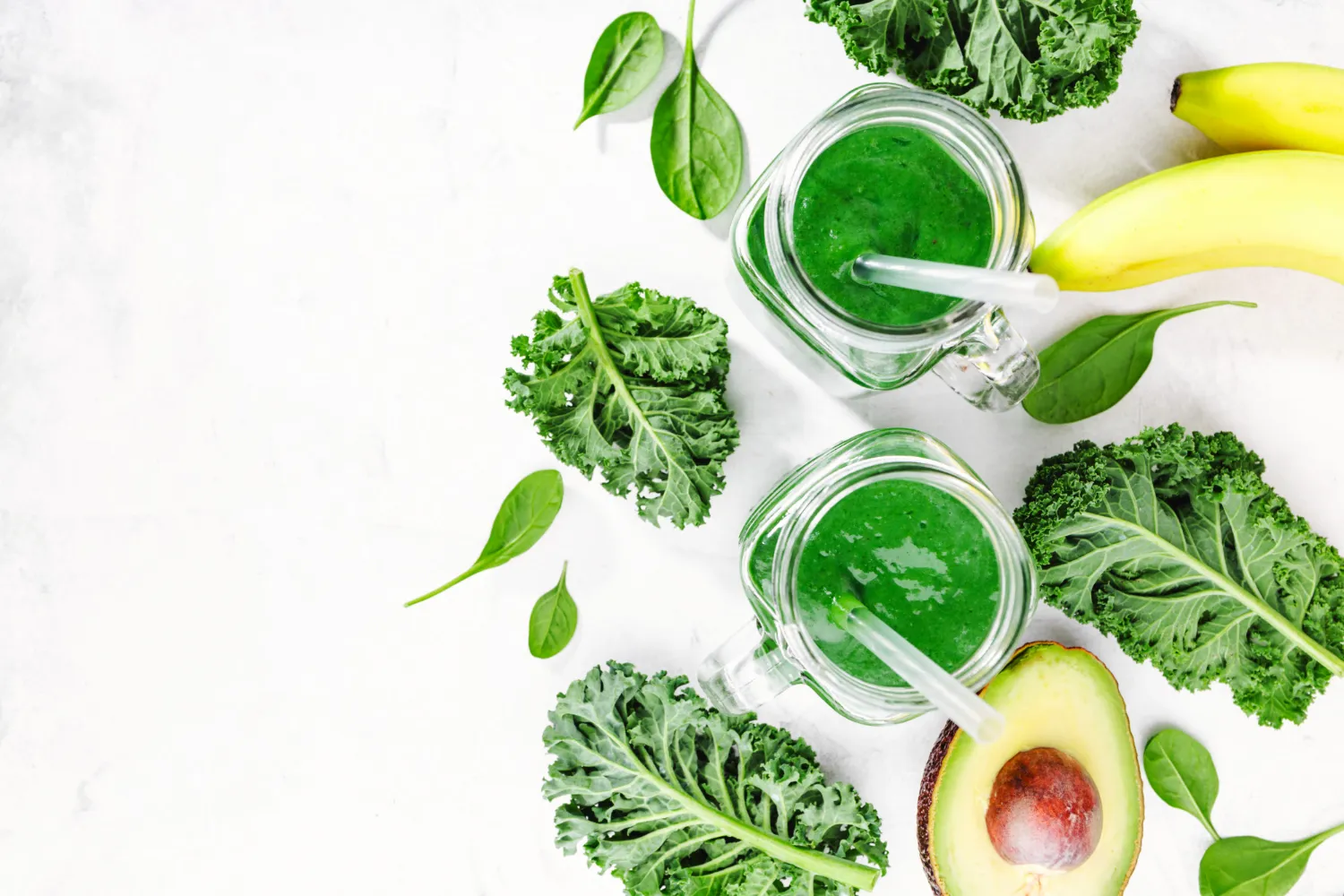You go through many changes throughout your life, but very few are as impactful as puberty and menopause.
Between changes in metabolism, digestion, and hormone levels, on top of other things that are going on in your life, managing your weight at that age can feel impossible. This is where a gluten-free diet comes in.
Research suggests that eliminating gluten can help reduce bloating, improve energy levels, and support digestive health, making it a potentially attractive option for weight loss. This approach removes processed foods containing wheat, barley, and rye while emphasizing whole, nutrient-dense alternatives.
Understanding Gluten and Its Effects on Health

Gluten is a protein found in wheat, barley, rye, and triticale that acts as a binding agent, giving foods their stretchy, elastic texture.
While most people can consume gluten without issues, your body at 40 and above may develop sensitivities that can manifest as digestive discomfort, bloating, or fatigue.
About one in 100 people has celiac disease, while non-celiac gluten sensitivity affects many more individuals with similar symptoms but without intestinal damage.
Beyond medical conditions, eliminating gluten from your diet can reduce inflammation markers and improve nutrient absorption. Common hiding places for gluten include salad dressings, sauces, soups, and even unexpected items like lip balm and medications.
Understanding these sources helps create a foundation for successful gluten-free weight loss.
7-Day Gluten-Free Weight Loss Diet Plan

This structured meal plan combines satisfying, nutrient-dense foods while eliminating gluten-containing ingredients.
Each day provides balanced macronutrients to support weight loss goals while maintaining energy levels throughout your busy schedule.
Day 1
Start with overnight chia seed pudding, using two tablespoons of chia seeds, a cup of Greek yogurt, vanilla extract, and sliced fruits. For lunch, enjoy chicken, lentil, and vegetable soup paired with a small mixed green salad. Finally, end the day with steak tacos served in corn tortillas with sautéed mushrooms and spinach for dinner.
This combination provides high-quality protein, healthy fats from chia seeds, and fiber-rich vegetables. The corn tortillas satisfy carbohydrate needs without gluten, while the varied textures and flavors prevent meal monotony.
If you’re feeling snacky, we recommend raw almonds or sliced apples with almond butter to maintain steady blood sugar levels.
Day 2
Begin with a vegetable omelet packed with nutrient-dense ingredients, followed by a quinoa salad with tomatoes, cucumber, spinach, and avocado for lunch. Evening brings shrimp skewers alongside a garden salad dressed with olive oil and lemon.
For this day, we’re emphasizing lean protein sources and healthy fats while incorporating quinoa as a complete protein grain.
The variety of colorful vegetables provides antioxidants and fiber to support digestive health. Avocado adds monounsaturated fats that help with satiety and nutrient absorption.
Consider adding a mid-afternoon snack of Greek yogurt with berries to help sustain your energy.
Day 3
Oatmeal topped with fresh berries and walnuts provides a fiber-rich start to your day, while tuna salad with hard-boiled eggs offers a protein-packed lunch. Then, for dinner, you can have chicken and broccoli stir-fry prepared with olive oil and gluten-free tamari sauce. The oats must be certified gluten-free to avoid cross-contamination. Walnuts contribute omega-3 fatty acids for brain health and inflammation reduction.
According to studies, the stir-fry method preserves vegetable nutrients while creating satisfying textures. Tamari provides umami flavor without wheat-based soy sauce.
This day balances comfort foods with weight loss goals through proper portion control and nutrient timing.
Day 4
Gluten-free toast topped with avocado and a poached egg creates a satisfying breakfast, while a burrito bowl with black beans, rice, guacamole, and fajita vegetables provides lunch variety. Dinner consists of garlic butter shrimp with a side salad.
The combination of healthy fats from avocado and high-quality protein from eggs supports hormone production, which is particularly important in your 40s. Eating black beans add plant-based protein and fiber to promote fullness.
As a bonus, the burrito bowl format allows portion control while delivering complex carbohydrates for sustained energy and shrimp provides lean protein with minimal calories, making it ideal for weight loss goals.
Day 5
A banana-berry smoothie made with half a banana, mixed berries, Greek yogurt, and milk begins the day, followed by a chicken salad wrap using gluten-free tortillas. For dinner, we recommend a heart-healthy serving of baked salmon with roasted vegetables, including potatoes, broccoli, carrots, and green beans.
The smoothie is an excellent way to get natural sugars for an energy boost in the morning, while Greek yogurt adds probiotics for digestive health on top of protein. Salmon delivers omega-3 fatty acids that studies show help support heart health and may help reduce inflammation.
The roasted vegetables help create different flavors and textures while providing essential vitamins and minerals. This combination supports both weight loss and overall health maintenance.
Day 6
Start the morning with a mushroom and zucchini frittata for a healthy dose of protein and vegetables, while lunch features stuffed bell peppers filled with ground beef, brown rice, tomatoes, and cheese. Have roasted chicken with quinoa salad loaded with fresh vegetables for dinner.
The frittata provides sustained energy through eggs while incorporating low-calorie, nutrient-dense vegetables. Bell peppers provide vitamin C and antioxidants while serving as a natural container for the protein-rich filling. Brown rice adds complex carbohydrates and B vitamins, which are often lacking in gluten-free diets. The roasted chicken provides complete amino acids necessary for muscle maintenance during weight loss, while quinoa delivers additional protein and fiber.
Day 7
Two poached eggs with gluten-free bread conclude the week's breakfast rotation, followed by chicken salad dressed with olive oil for lunch. Grilled lamb with roasted vegetables creates a satisfying dinner finale.
This final day demonstrates how simple preparations can still deliver sophisticated flavors and complete nutrition.
Poached eggs provide high-quality protein without added fats, while olive oil in the chicken salad offers heart-healthy monounsaturated fats. Lamb provides iron and zinc, which, according to research, can help with perimenopause and menopause symptoms.
The roasted vegetables can include seasonal options like Brussels sprouts, sweet potatoes, or asparagus to maintain variety and prevent dietary boredom.
Recommended Gluten-Free Foods for Weight Loss

Successful gluten-free weight loss depends on choosing nutrient-dense alternatives that satisfy hunger while supporting metabolic health.
Focus on whole foods rather than processed gluten-free substitutes, which often contain excess calories, sugar, and sodium.
Whole Grains and Fiber-Rich Options
Quinoa stands out as a complete protein grain containing all nine essential amino acids, which, according to studies, makes it beneficial for your heart, brain, and digestive health. Brown rice provides B vitamins and sustained energy, while buckwheat offers rutin, a flavonoid that supports cardiovascular health. Amaranth is rich in calcium and magnesium, nutrients crucial for bone health.
Certified gluten-free oats provide soluble fiber that helps lower cholesterol levels and promote feelings of satiety. Millet and teff add variety while contributing protein and minerals.
These grains prevent the nutrient deficiencies common in restrictive diets while supporting digestive health through their fiber content.
Lean Proteins and Healthy Fats
These protein sources maintain muscle mass while supporting the metabolic changes common in women over 40:
- Wild-caught salmon provides omega-3 fatty acids that reduce inflammation and support brain health
- Grass-fed beef offers iron and vitamin B12
- Free-range poultry delivers complete proteins with lower saturated fat content.
- Plant-based protein options, such as lentils, chickpeas, and black beans, combine protein with fiber to enhance satiety.
- Nuts and seeds contribute healthy fats along with vitamin E and magnesium.
- Avocados provide monounsaturated fats that support hormone production and nutrient absorption.
- Eggs from pasture-raised hens offer choline for brain function and high-quality protein for muscle preservation.
Fruits, Vegetables, and Nutrient-Dense Choices
Berries offer antioxidants and fiber with minimal sugar impact in a powerhouse package, making them one of the best food choices for those looking to lose or maintain their weight. Leafy greens, such as spinach and kale, offer folate, iron, and vitamins A and K, while adding volume to meals without excess calories.
Cruciferous vegetables, including broccoli and Brussels sprouts, contain compounds that studies show help support hormone metabolism. Sweet potatoes provide beta-carotene and complex carbohydrates for sustained energy. Citrus fruits deliver vitamin C and flavonoids that support immune function. Non-starchy vegetables like bell peppers, zucchini, and asparagus add fiber and nutrients while keeping calorie density low.
These choices create satisfying meals that support both weight loss and overall health goals.
Tips for Maintaining a Balanced Gluten-Free Diet

Transitioning to gluten-free eating requires knowing how to identify hidden gluten sources and nutrient gaps.
Reading Nutrition Labels
Food labels require careful examination beyond the obvious wheat, barley, and rye listings.
Modified food starch, malt extract, and hydrolyzed wheat protein often appear in unexpected products like seasoning mixes and processed meats. The FDA requires foods labeled "gluten-free" to contain fewer than 20 parts per million of gluten, making certified products safer choices.
Look for statements like "processed in facilities that also process wheat" to avoid cross-contamination.
Ingredient lists change frequently, so check familiar products often. Natural flavoring and stabilizers may contain gluten derivatives.
Oats require "certified gluten-free" labeling since standard oats often face contamination during processing and transportation.
Cooking Techniques to Avoid Cross-Contamination
Even small amounts of contamination can trigger symptoms in sensitive individuals and potentially interfere with weight loss progress through inflammation.
Follow these tips to avoid cross-contamination:
- Use separate cooking utensils, cutting boards, and storage containers.
- Avoid using wooden utensils and porous surfaces, which can harbor gluten particles even after washing.
- Have toasters for gluten-free bread.
- Clean surfaces thoroughly before preparing gluten-free meals, especially after handling conventional flours or breadcrumbs.
- Store gluten-free items in sealed containers above gluten-containing products to prevent particle drift.
- Replace old non-stick pans with scratched surfaces that may trap gluten residue.
Choosing Gluten-Free Alternatives
Replace wheat flour with almond flour and coconut flour. They provide protein and healthy fats. Meanwhile, cauliflower rice offers a low-carbohydrate substitute for traditional grains without sacrificing volume or satisfaction. Finally, spiralized vegetables create pasta alternatives with added nutrients and fewer calories.
Other alternatives are lettuce wraps instead of tortillas and bread, gluten-free pasta made from legumes for added protein and fiber, as well as rice paper wraps for fresh spring rolls and wraps.
These alternatives often contain more nutrients than their gluten-containing counterparts while supporting weight loss through increased vegetable consumption and reduced processed food intake.
Recap of Key Concepts

These core principles guide long-term dietary changes that support both health and weight management goals.
Importance of Monitoring Gluten Intake
Eliminating gluten isn’t easy. It will keep you on your toes because even trace amounts can trigger inflammatory responses, particularly if you’re sensitive to gluten or if you’re already used to following a gluten-free diet.
Hidden sources of gluten include medications, supplements, and beauty products. Meanwhile, eating out at restaurants poses a particular challenge. Although they may offer gluten-free meals, you can’t guarantee that there was no cross-contamination during food preparation.
Keeping a food diary helps identify patterns between gluten exposure and symptoms like bloating, fatigue, or digestive discomfort.
With consistency, you’ll notice improved energy and reduced cravings when gluten elimination becomes consistent. Regular blood tests can monitor nutrient levels and inflammation markers.
Working with healthcare providers helps you address any deficiencies that may develop during the transition period.
Long-Term Benefits of a Gluten-Free Diet
Research indicates that gluten elimination may reduce systemic inflammation, among other things.
Improved nutrient absorption often occurs as digestive health improves, leading to better energy levels and mood stability. You’ll notice reduced bloating and improved bowel regularity within weeks. Sleep quality may also improve, and hormonal balance can benefit from reduced inflammatory stress. Skin clarity often improves as inflammatory responses diminish.
These benefits extend beyond weight loss to encompass overall vitality and wellness. The anti-inflammatory effects may also support cardiovascular health and cognitive function as women age.
Maintaining a Healthy Lifestyle
Sustainable gluten-free weight loss is easier said than done. It requires more than just eating right. You need to be flexible with your lifestyle choices while maintaining the right social connections.
For example, meal planning prevents impulsive food choices that may contain hidden gluten sources, and regular exercise complements dietary changes by supporting muscle maintenance and metabolic health.
Learn to manage your stress, either by taking up yoga and mindfulness exercises or consulting an expert. Cortisol elevation can interfere with your weight loss efforts, putting all the energy you put into trying to lose weight to waste.
Don’t forget to reach out either. Building a support network of friends and family who understand what you’re trying to achieve can help prevent you from feeling isolated. Better yet, look for communities of like-minded individuals!
And don’t forget that occasional lapses aren’t necessarily the end for your journey. You should always allow for occasional indulges without feeling guilty.
Sources
- Niland, Benjamin, and Brooks D. Cash. "Health Benefits and Adverse Effects of a Gluten-Free Diet in Non–Celiac Disease Patients." Gastroenterology & Hepatology, vol. 14, no. 2, 2018, p. 82, https://pmc.ncbi.nlm.nih.gov/articles/PMC5866307/.
- Sun, Bo, and Jing Yuan. "Effects of Different Cooking Methods on Health-promoting Compounds of Broccoli." Journal of Zhejiang University. Science. B, vol. 10, no. 8, 2009, p. 580, https://doi.org/10.1631/jzus.B0920051.
- Banaszak, Michalina, et al. "Role of Omega-3 Fatty Acids Eicosapentaenoic (EPA) and Docosahexaenoic (DHA) As Modulatory and Anti-inflammatory Agents in Noncommunicable Diet-related Diseases – Reports from the Last 10 Years." Clinical Nutrition ESPEN, vol. 63, 2024, pp. 240-258, https://doi.org/10.1016/j.clnesp.2024.06.053.
- Lomagno, Karla A., et al. "Increasing Iron and Zinc in Pre-Menopausal Women and Its Effects on Mood and Cognition: A Systematic Review." Nutrients, vol. 6, no. 11, 2014, p. 5117, https://doi.org/10.3390/nu6115117.
- Navruz-Varli, Semra, and Nevin Sanlier. "Nutritional and Health Benefits of Quinoa (Chenopodium Quinoa Willd.)." Journal of Cereal Science, vol. 69, 2016, pp. 371-376, https://doi.org/10.1016/j.jcs.2016.05.004.
- Lin, Tengda, et al. "Trends in Cruciferous Vegetable Consumption and Associations with Breast Cancer Risk: A Case-Control Study." Current Developments in Nutrition, vol. 1, no. 8, 2017, p. e000448, https://doi.org/10.3945/cdn.117.000448. Philip, Ashok, and Nicole D. White. "Gluten, Inflammation, and Neurodegeneration." American Journal of Lifestyle Medicine, vol. 16, no. 1, 2022, p. 32, https://doi.org/10.1177/15598276211049345.
FAQs
Does going gluten-free guarantee weight loss for women over 40?
Not automatically. Weight loss occurs when you're in a calorie deficit. However, for many women over 40, removing gluten can reduce bloating, inflammation, and improve gut health, which supports a healthier metabolism and makes weight management easier. The key is to replace gluten-containing foods with whole, nutrient-dense options like vegetables and lean proteins, not processed gluten-free snacks.
Why is a gluten-free diet plan particularly helpful for women over 40?
As women age, hormonal fluctuations can increase inflammation and sensitivity to certain foods. A well-structured gluten-free diet focuses on whole foods that naturally reduce inflammation. This plan is tailored to support hormonal balance and metabolism by emphasizing protein to maintain muscle mass and fiber to promote satiety and stable blood sugar levels.
What are the best gluten-free foods to include for weight loss?
Focus on foods that are naturally gluten-free. Excellent choices include lean proteins (chicken, fish, eggs, legumes), all fruits and vegetables, healthy fats (avocado, olive oil, nuts, seeds), and gluten-free whole grains in moderation (like quinoa, brown rice, and certified gluten-free oats). These foods provide essential nutrients and help keep you feeling full.
What is the biggest mistake to avoid on a gluten-free weight loss diet?
The most common mistake is the "gluten-free junk food trap." Many people simply swap regular pasta, bread, and cookies for their processed gluten-free counterparts, which are often high in sugar, refined starches, and calories. For successful weight loss, prioritize whole, unprocessed foods over packaged gluten-free products.
What should I do after completing the 7-day plan?
This 7-day plan is designed to be a foundation for a sustainable lifestyle. After the week is over, you can continue using the principles and recipes, rotating in new meals to keep things interesting. The goal is to use this plan as a guide to build lasting, healthy habits for long-term weight management and well-being.














